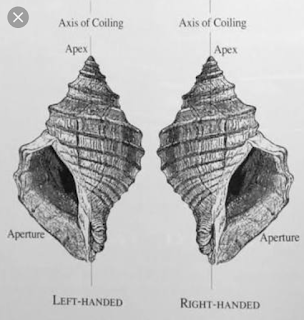DNA :Physical properties and types of DNA
Physical Properties
- DNA is usually double stranded.
- Molecular configuration of DNA is three dimensional(3D).
- It's diameter is 2nm.
- Number of bases in one turn of DNA are 10.
- Angle of one complete turn is 360 degree.
- Length of H-bond is near about3 angstrom.
- Diameter of base pair between two stands is about 11 angstrom .
- Distance between two adjacent bases about 3.4 angstrom.
- Distance between two complete turn is 34 angstrom.
- Nitrogenous bases are A ,T, G, C.
- Nitrogenous composition is always A\T =1 and G / C =1.
- Purines and pyrimidines are in equal ratio .
- DNA behaves like polyelectrolyte because of phosphate group that lies on outer surface of DNA .
- Size of DNA varies. For example DNA of phage T2 bears 2 into 10 raise to power 5 pairs of nucleotides with molecular weight of 130 million.
- In eukaryotes DNA is always associated with histones which are basic in nature and positively charged.
- DNA molecules are very large and can be fragmented.
- DNA reacts with Fuelgen's reagent and give bluish violet colour.
- Most of DNA is found in chromosomes little DNA is found in cytoplasm.
- DNA found in cell organelle is like mitochondria ,chloroplast different size and based sequence from nuclear DNA in same cell.
- DNA have property of denaturation or melting and renaturation or annealing
Denaturation and renaturation
- When double stranded DNA molecule is exposed to high temperature or treated with alkali aur acid aur when a salt solution of DNA is heated to 70– 80 degree Celsius , the two separates due to breaking of hydrogen bond this step is known as denaturation. Due to denaturation change in viscosity absorbents and optical rotation of DNA.*
- When this denaturated DNA is provided with low temperature the two separated DNA strands recoil , this property is known as Renaturation.
Hyperchromicity in DNA
Due to presence of purines and Pyrimidines bases, they absorb UV with Max. 260nm. When a solution of native DNA is heated, one observe the decrease in viscosity* and an increase in optical density* .This phenomenon is called Hyperchromicity.
The percentage in increase of light absorption at 260 NM produced by heating a native DNA sample is directly released to contents of A- T base pair. The higher the proportion of A-T pairs, the greater the increase of light absorption.
The hyperchromatism in in off double helix DNA is due to Electronic interactions between the stacked bases in native double helical structure which have the effect of diminishing the amount of light each Residue can absorb.
*Viscosity
The DNA solution Have very high viscosity. Viscosity measurements are often used to follow the course of unwinding of DNA molecules.
*Optical rotation
The optical property of DNA is used to calculate the degree of helicity of DNA.
Types of DNA
DNA may be linear Or circular.
Linear DNA : DNA found in eukaryotes associated with chromosomes.
Circular DNA: it is present in prokaryotes and mitochondria and chloroplast of Eukaryotic cells.
Various forms of DNA
- A -DNA
- B-DNA
- C-DNA
- D-DNA
- Z-DNA
Location of DNA
In in prokaryotes DNA is found in cytoplasm. In eukaryotes it is mainly located in nucleus as chief constituent of chromosomes in combination with proteins to form DNP ( deoxyribonucleoprotein ). Little amount of of DNA also found in organelle like mitochondria and chloroplast.
Difference between prokaryotic and Eukaryotic DNA
*Denaturation of DNA brings about the changes in following physical properties :
- The viscosity decrease.
- The light absorption become more negative.
- The optical rotation becomes more negative.
- Buoyant density increase.





Very nice 😊
ReplyDeleteKeep it upp. 👍👍
ReplyDeleteGood job
ReplyDeleteexcellent
ReplyDelete